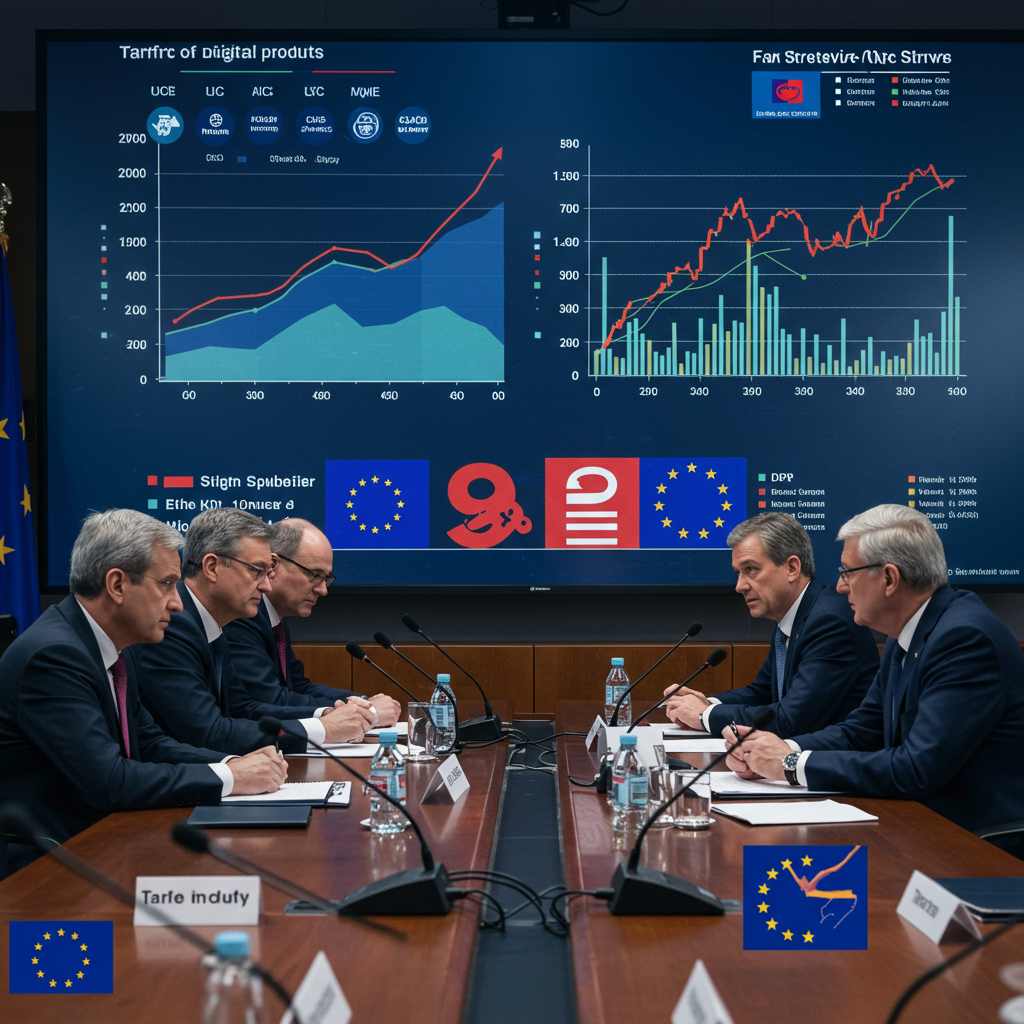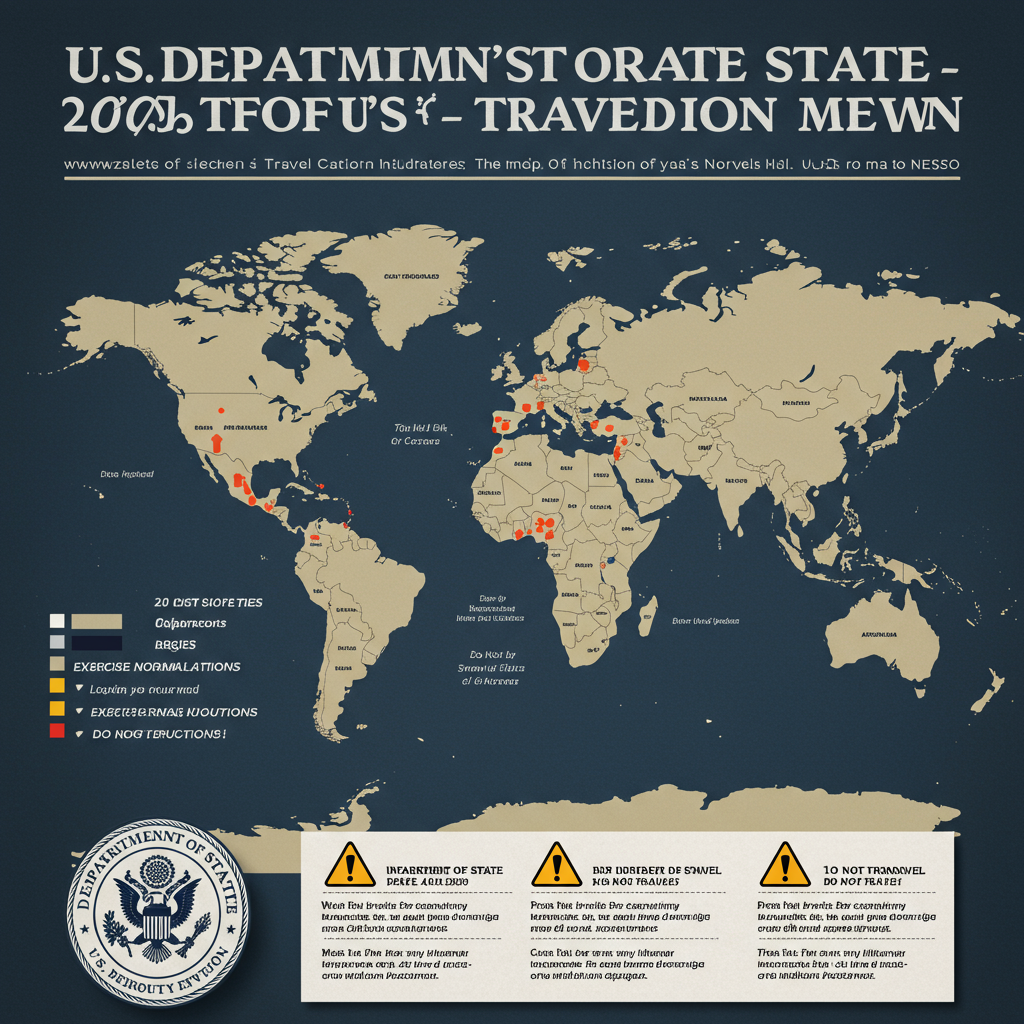A fresh wave of tension is gripping transatlantic trade relations. The European Union has firmly stated its intention to defend its economic interests. This comes after the United States threatened substantial new tariffs on European goods. The proposed 30% levy, slated for August 1, has put Brussels on high alert. While the EU still seeks a trade agreement, leaders are preparing for potential retaliation.
US Tariff Threat Jolts Transatlantic Trade
The latest tariff threat from U.S. President Donald Trump marks a significant escalation. It follows a period where both sides reportedly saw improving relations. Intense negotiations had been ongoing. The proposed 30% tariff on a broad range of European goods surprised EU officials. This new threat is separate from existing US duties, such as those on steel and aluminum imports. The August 1 deadline looms large. It forces the EU to consider its next moves carefully.
Ursula von der Leyen heads the European Commission. This body manages trade policy for the 27 member states. She confirmed the bloc’s readiness to work towards a deal before the deadline. However, her message was clear and resolute. “We will take all necessary steps to safeguard EU interests,” von der Leyen stated. This includes potentially implementing “proportionate countermeasures if required.” Such steps would likely involve retaliatory tariffs on U.S. goods entering Europe.
EU Prepares Countermeasures and Diplomatic Push
The potential August 1 tariffs triggered immediate action within the EU. Ambassadors were scheduled to discuss the situation promptly. This meeting preceded an extraordinary gathering of EU trade ministers in Brussels. A key decision for the ministers involves previously prepared retaliatory measures. The EU had readied tariffs targeting 21 billion euros of U.S. imports. These were in response to existing U.S. steel and aluminum duties. A suspension of these countermeasures was set to expire. Ministers had to decide whether to activate them or extend the pause.
Adding complexity, the EU had developed a second, larger package of potential countermeasures. This package targets U.S. goods valued at a staggering 72 billion euros. These measures are still in development and require member state approval. While the EU initially extended the suspension of the first package to allow more time for talks, leaders are determined to be prepared. Von der Leyen noted the bloc would “continue to prepare further countermeasures so we are fully prepared” for any scenario.
Key European capitals swiftly backed the Commission’s stance. Germany’s Economy Minister, Katherina Reiche, urged a “pragmatic outcome.” However, she warned that Trump’s tariffs would severely harm European exporters. They would also negatively impact the U.S. economy and consumers. French President Emmanuel Macron took to social media platform X. He stressed the need for the European Commission to defend the Union’s interests “resolutely.”
Macron also raised the possibility of deploying the EU’s Anti-Coercion Instrument. This tool, developed during Trump’s previous term, was used against China. It allows the EU to go beyond traditional goods tariffs. It can impose restrictions on trade in services. This applies if a country uses tariffs to force a change in policy. However, von der Leyen later clarified this instrument was “not yet on the table.” She indicated it was reserved for “extraordinary situations,” which the EU felt it hadn’t reached yet. Spain’s Economy Ministry also voiced support for continued negotiations but stood ready for “proportionate countermeasures.”
Understanding the Root of the Trade Friction
The trade relationship between the EU and the United States is immense. Combining goods, services, and investment, they are each other’s largest trading partners. This relationship involves trillions of dollars. The American Chamber of Commerce to the EU warned that disputes could jeopardize $9.5 trillion of business.
U.S. President Trump has often been critical of the European Union. He once claimed it was “formed to screw the United States.” His most frequently cited grievance is the U.S. merchandise trade deficit with the EU. According to U.S. Census Bureau data, this deficit reached $235 billion in 2024. The EU, however, highlights a U.S. surplus in services trade. They argue this partially balances the overall economic relationship.
Past actions by President Trump show a pattern. He has often announced significant tariffs. Yet, he has sometimes scaled them back or suspended them before implementation. This pattern has led to somewhat muted reactions in financial markets compared to earlier threats. Some EU officials privately view the latest tariff threat as a negotiating tactic.
Economic Implications and Market Uncertainty
Analysts are carefully watching the situation. Carsten Brzeski, a global head of macro at ING, described it as a “make-or-break moment.” He suggested the move indicates stalled negotiations. The EU must now decide whether to “budge or to play hardball.” This decision, he noted, will increase market volatility and uncertainty.
Economists warn of potential negative impacts. Cyrus de la Rubia, chief economist at Hamburg Commercial Bank, noted that U.S. consumers would likely bear the brunt of the tariffs. However, there would be clear repercussions for the euro area economy too. The region was already experiencing weak growth.
The European Central Bank (ECB) has analyzed potential trade war scenarios. Their latest economic projections used a 10% U.S. tariff on EU exports as a baseline. This scenario projected euro area output growth at 0.9% in 2025, 1.1% in 2026, and 1.3% in 2027. Inflation was forecast at 2.0% in 2027. The ECB also modeled a 20% U.S. tariff. This higher tariff could curb growth by a full percentage point over the same period. It would also lower inflation to 1.8% in 2027. The ECB did not even provide an estimate for the impact of a 30% tariff, highlighting the severity of the latest threat.
Bernd Lange, who heads the European Parliament’s trade committee, expressed a strong view. He believes the first stage of EU countermeasures should be implemented immediately. He advocated for quickly following with the second package. Trump has indicated he would mirror any retaliatory moves by the EU. This suggests the possibility of a spiraling trade conflict.
The EU’s decision on extending the suspension of steel and aluminum countermeasures was pending the extraordinary meeting of trade ministers. This decision would signal the bloc’s immediate stance. The larger potential package targeting 72 billion euros remains a significant threat held in reserve. The outcome of the trade tensions hinges on whether negotiations can yield a breakthrough before the August 1 deadline or if both sides proceed with reciprocal tariff increases. The path ahead remains uncertain for transatlantic trade.
Frequently Asked Questions
What potential US tariffs is the EU responding to?
The European Union is reacting to a threat from U.S. President Donald Trump to impose a substantial 30% tariff on a broad range of European goods. This proposed tariff is scheduled to take effect from August 1. It is a new measure, separate from existing U.S. tariffs previously applied to products like European steel and aluminum. The threat surprised the EU and has significantly heightened trade tensions.
How is the EU preparing to respond if the US imposes new tariffs?
The EU is preparing a two-pronged response. First, it is keeping the door open for further negotiations to reach a trade agreement before the August 1 deadline. Second, it is preparing “proportionate countermeasures” to defend its interests. This includes having pre-approved tariff packages ready to deploy on U.S. goods. A smaller package targeting 21 billion euros of U.S. imports (related to existing steel/aluminum tariffs) was under consideration for immediate activation or extended suspension. A larger potential package, targeting 72 billion euros, is also being prepared, though details require member state approval.
What could be the economic impact of increased EU-US trade tensions?
Economists warn of negative consequences on both sides of the Atlantic. While U.S. consumers might directly feel the impact of tariffs through higher prices on imported goods, the euro area economy could also suffer significant setbacks. The European Central Bank’s projections show that even a 10% U.S. tariff could curb euro area growth, and a 20% tariff could reduce growth by a full percentage point over several years. A 30% tariff, as threatened, would likely have even more severe repercussions on an economy already facing weak growth. The dispute also jeopardizes a massive $9.5 trillion transatlantic business relationship.




